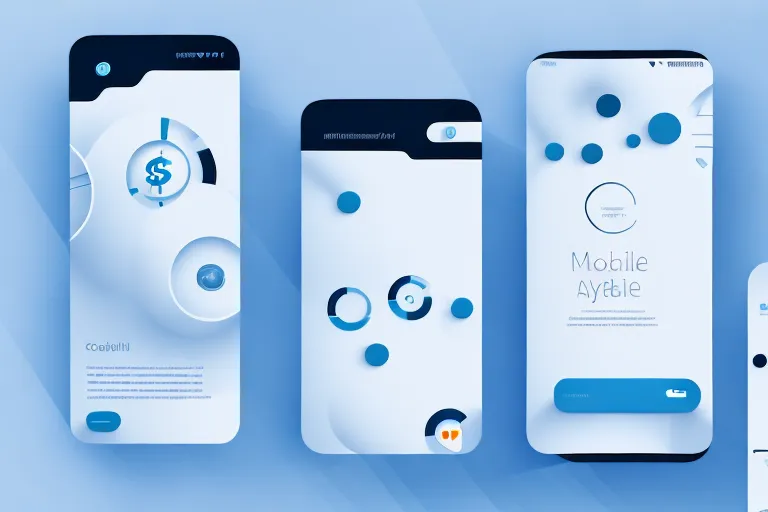In today's fast-paced digital age, businesses are always on the lookout for innovative tools that can help them engage with customers better and improve their bottom line. One such tool that is increasingly gaining popularity is RCS (Rich Communication Services) Business Messaging. If you are an Android enterprise looking to enhance your communication with customers, read on to understand how to harness the potential of RCS Business Messaging to achieve success.
Understanding RCS Business Messaging
What is RCS Business Messaging?
RCS Business Messaging is an upgraded version of SMS (Short Message Service), providing richer and more interactive features such as multimedia content, read receipts, and the ability to chat directly with businesses. RCS messaging is designed to create a more personalized and engaging experience for users, with features such as suggested replies, suggested actions, maps, and more.
Imagine you are a customer who wants to order a pizza from a local restaurant. With RCS messaging, you can not only send a text message to the restaurant, but also view their menu, place an order, and even track the delivery status of your pizza, all within the messaging app. This level of convenience and interactivity is what makes RCS messaging so appealing to both users and businesses.
Benefits of RCS for Enterprises
As a business owner, you might be wondering what benefits RCS messaging can provide for your enterprise. Firstly, RCS provides a more interactive and engaging experience for customers, which can lead to higher conversion and retention rates. For example, a clothing store can send an RCS message to a customer with a personalized outfit recommendation based on their previous purchases, with images and links to purchase the items directly from the message.
Additionally, RCS messaging can help businesses streamline their customer service, simplifying inquiries and purchase processes, resulting in higher customer satisfaction rates. For instance, a hotel can use RCS messaging to allow customers to check-in, view their room details, and even order room service, all through a single messaging thread.
RCS vs. SMS: Key Differences
RCS provides several key differences from SMS, including multimedia support and suggested actions. With RCS you can include rich media such as images, videos, GIFs, and audio files, which can not only improve user experience but also lead to higher conversions. For example, a travel agency can send an RCS message with a video showcasing a vacation package, along with a suggested action to book the package directly from the message.
The suggested actions feature makes it easy for users to take actions such as make reservations, book services, or complete purchases with just one click. This can greatly simplify the customer journey and lead to higher conversion rates. For instance, a restaurant can send an RCS message with a suggested action to make a reservation for a special event, with options to select the number of guests and the preferred time.
In conclusion, RCS messaging provides a wealth of opportunities for businesses to engage with customers in a more personalized and interactive way. By leveraging the rich features of RCS, businesses can improve customer satisfaction, streamline processes, and ultimately drive higher conversions and revenue.
Implementing RCS Business Messaging in Your Android Enterprise
Rich Communication Services (RCS) is a messaging protocol that enables businesses to communicate with their customers in a more engaging and interactive way. RCS supports features like high-resolution images, videos, and audio messages, as well as read receipts and typing indicators, making it a powerful tool for businesses to engage with their customers. However, implementing RCS in your enterprise requires careful consideration and planning.
Choosing the Right RCS Platform
There are several RCS platforms available in the market, each with its own set of features and capabilities. To choose the right one for your enterprise, consider your business needs, budget, and scalability. It is also essential to consider the platform's security features, compliance policies, and customer support before making a decision.
Some RCS platforms offer advanced features like chatbots and AI-powered automation, which can help streamline your messaging processes and improve customer engagement. Others may offer more basic features but at a lower cost, making them a better fit for smaller businesses or those with limited budgets.
When evaluating RCS platforms, it is also important to consider the platform's compatibility with your existing infrastructure, including your customer relationship management (CRM) system and other internal systems.
Integrating RCS with Your Existing Infrastructure
Once you have chosen the right RCS platform for your enterprise, the next step is to integrate it with your existing infrastructure. This may involve partnering with a third-party messaging provider or creating custom APIs to ensure compatibility with your internal systems.
Integrating RCS with your existing infrastructure can help streamline your messaging processes and improve efficiency. For example, you may be able to automate certain messaging tasks, such as sending appointment reminders or order confirmations, which can save time and reduce the risk of errors.
Ensuring Security and Compliance
With all the benefits of RCS, it is also essential to ensure the security and compliance of your messaging processes. Make sure to choose an RCS platform with robust security measures such as end-to-end encryption, which can help protect your customers' sensitive information from potential hackers or data breaches.
It is also important to comply with all relevant local and international regulations, such as GDPR or CCPA. Failure to comply with these regulations can result in significant fines and damage to your business's reputation.
In addition to choosing a secure RCS platform and complying with regulations, it is also important to educate your employees on best practices for messaging security. This may include regular training on how to identify and avoid phishing scams, as well as guidelines for handling customer data.
In Conclusion
Implementing RCS in your Android enterprise can help improve customer engagement and streamline your messaging processes. However, it requires careful consideration and planning to ensure the security and compliance of your messaging processes. By choosing the right RCS platform, integrating it with your existing infrastructure, and ensuring security and compliance, you can leverage the power of RCS to take your business's messaging to the next level.
Enhancing Customer Experience with RCS Features
With the increasing competition in the market, businesses are constantly looking for ways to enhance their customer experience. One such way is by using RCS (Rich Communication Services) features. RCS messaging provides businesses with a more engaging and interactive way to communicate with their customers, leading to better engagement and conversion rates.
Rich Media and Interactive Content
One of the key features of RCS messaging is the ability to incorporate rich media and interactive content into messages. By using interactive content such as carousels and sliders, businesses can display their products in immersive ways, providing customers with a more engaging and interactive experience. This can lead to increased brand awareness, engagement, and ultimately, conversion rates.
For example, a clothing store can use a carousel to showcase its latest collection, allowing customers to view different items and styles with ease. Similarly, a restaurant can use a slider to display its menu, allowing customers to swipe through different dishes and make their selections.
Chatbots and AI Integration
RCS messaging also allows for chatbots and AI integration, providing businesses with a more efficient and cost-effective way to provide personalized customer service. With AI integration, chatbots can analyze customer data and provide customized recommendations, automate responses and delivery confirmation, and solve issues regarding orders and services.
For example, a travel agency can use a chatbot to provide customers with personalized travel recommendations based on their preferences and budget. Similarly, an e-commerce store can use a chatbot to automate responses to frequently asked questions, such as shipping and return policies.
Personalization and Targeted Messaging
RCS messaging allows businesses to create targeted messaging campaigns that resonate with their customers. By analyzing data points such as user preferences, purchase behavior, and locations, businesses can create personalized and location-specific messaging that leads to better engagement and conversion rates.
For example, a coffee shop can use RCS messaging to send personalized offers and promotions to customers based on their location and purchase history. Similarly, a fitness center can use RCS messaging to send targeted messages to customers who have not visited the gym in a while, offering them a special discount to encourage them to come back.
Overall, RCS messaging provides businesses with a more engaging and interactive way to communicate with their customers. By incorporating rich media and interactive content, chatbots and AI integration, and personalized and targeted messaging, businesses can enhance their customer experience and ultimately, drive better business results.
Measuring the Success of Your RCS Business Messaging Strategy
Key Performance Indicators (KPIs) for RCS
To measure the success of your RCS messaging strategy, you should establish relevant key performance indicators, Identifying and tracking essential metrics such as customer engagement rates, conversion rates, and click-through rates can help you identify areas of improvement and refine your messaging strategy for better results.
Analyzing Customer Engagement and Satisfaction
With RCS messaging, you can analyze customer engagement and satisfaction by tracking metrics such as message delivery, sentiment analysis, and customer feedback. By optimizing customer engagement and satisfaction, businesses can achieve greater customer loyalty and a higher lifetime value.
Continuous Improvement and Optimization
RCS messaging is an excellent tool to improve customer engagement and business outcomes, but it is essential to continue to optimize and improve on the messaging strategy. By continuously monitoring and analyzing metrics, businesses can identify areas for improvement and optimize messaging further for maximum ROI.
Conclusion
RCS Business Messaging provides Android enterprises with a powerful tool for enhancing customer communication and increasing business outcomes. Implementing RCS messaging can seem like a daunting task, but by following the steps outlined in this article, and continuously tracking and analyzing metrics, businesses can harness RCS messaging's full potential and achieve success.

